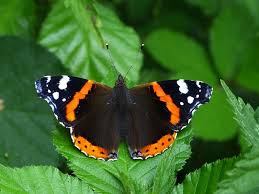Sickleholme Nature Notes
Two things impressed me during September. One was the changing colours around the course, as autumn approaches, and the other was the increasing number of members who have been sharing their wildlife sightings. In the latter context, the first day of the month produced a report of a Mole seen by Pat Tann (who provided a photograph), Jeff Farnell and several of the ladies as it crossed the practice putting green. It is years since I saw a Mole in daylight but I suspect that they are disturbed by the overhead movement of the heavy machinery used by the greens staff. Having commented last month on the number of Field Voles that might be feeding our young Kestrels, John Ellicock told me that the urine of these voles exudes ultra-violet light and one of the few creatures that can see that is the Kestrel. You live and learn!
Birds were less in evidence during the month, mainly due to feather moult and very little song. Exceptions to the latter were a single Chiffchaff, still very noisy around the 12th tee, several Wrens that seemed to favour the edges of the course and a number of Robins that had commenced their unique winter song. A family part of Jays could also be heard squabbling occasionally although they were certainly mobile and the only occasion that I caught up with them was at the back of the 2nd green.
I was clearly premature in “closing” the butterfly list last month as Red Admirals finally appeared and were reported by several members. One of the showier butterflies, with their red, black and white colours, most will have arrived from the Continent so numbers vary from year to year dependent on winds and breeding success. That takes us to 13 species for the year against my original guess of 16. There were still a few white species and Peacocks about, the latter captured on camera by Angus Clark as one rested on the 3rd tee board; seemingly plotting its route to the green.
I do not normally bother with lower life forms (sic!) but the last part of the year produces many spectacular fungi species. There were a number of boletes species and at least two types of Puffball but the only ones that I was confident about identifying were Fly Agaric; the red and white “Pixie House” look being sufficiently diagnostic.
Most creatures will be thinking about winter food now and Grey Squirrels were well in evidence as they started storing in their larders. Of more interest to me was the increasing crop of berries on the Rowans and other trees, as October should see the first arrival of winter thrushes, Redwing and Fieldfare, as well as post-breeding groups of Mistle Thrush and Blackbird. The latter will be supplemented by an influx from abroad. They will rely on the berry crop to get them as far through the winter as possible. October is one of my favourite months for both golf and wildlife and I always look forward to it.
Bryan Barnacle



